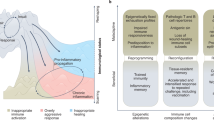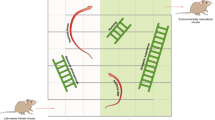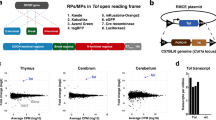Abstract
This year is the 50th anniversary of the publication of a paper by Milan Hašek, in which he showed the phenomenon of immunological tolerance by the selective failure of chimaeric chick-embryo parabionts to produce antibodies against the red blood cells of each other. The discovery of tolerance was credited by the Nobel prize, but excluded Hašek, because he misinterpreted his original experimental results. Hašek exuded an impressive personality and a much admired joie de vivre. With the benefit of hindsight, this article assesses the background of the period and the circumstances that led to this important discovery. I discuss Hašek's experimental ingenuity, the influence of the Lysenkoist genetic doctrine, Hašek's acceptance of the immunological theory to explain his work and his role in establishing a successful institute at the Czechoslovak Academy of Sciences.
This is a preview of subscription content, access via your institution
Access options
Subscribe to this journal
Receive 12 print issues and online access
$209.00 per year
only $17.42 per issue
Buy this article
- Purchase on Springer Link
- Instant access to full article PDF
Prices may be subject to local taxes which are calculated during checkout





Similar content being viewed by others
References
Grmek, M. D., Cohen, R. S. & Cimino, G. On scientific discovery. in The Erice lectures 3 (Dordrecht, 1981).
Glushchenko, I. E. Vegetative Hybridization of Plants (Moscow, 1951) (in Russian).
Waddington, C. H. Canalization of development and the inheritance of acquired characters. Nature 150, 563–565 (1942).
Gorczynski, R. M. & Steele, E. J. Inheritance of acquired immunological tolerance to foreign histocompatibility antigens in mice. Proc. Natl Acad. Sci. USA 77, 2871–2875 (1980).
Rutherford, S. L. & Lindquist, L. Hsp90 as a capacitator for morphological evolution. Nature 150, 563–565 (1998).
McLaren, A. Too late for the midwife toad. Stress, variability and hsp90. Trends Genet. 15, 169–171 (1999).
Vinogradova, T. V. Basics of Michurinist Biology (Textbook Publisher for Ministry of Education, Leningrad, 1950) (in Russian).
Hašek, M. Vegetative hybridization of animals by joint blood circulation during embryonal development. Cs. Biol. 2, 265–277 (1953) (in Czech).
Harris, M. Specificity and mode of action of cytotoxins produced against alien transplants in rats. J. Exp. Med. 107, 439–449 (1948).
Billingham, R. E., Brent, L. & Medawar, P. B. Actively aquired tolerance of foreign cells. Nature 172, 603–606 (1953).
Hašek, M. & Hraba, M. The significance of phylogenic kinship in immunological approximation during embryogenesis. Folia Biol. 1, 1–10 (1955).
Hašek, M. Tolerance phenomena in birds. Proc. R. Soc. B 146, 67–77 (1956).
Hašek, M., Hort, J., Lengerova, A. & Vojtiskova, M. Immunological tolerance in the heterologous system. Folia Biol. 9, 1–30 (1963).
Ivanyi, J. & Valentova, V. The immunological significance of taxonomic origin of protein antigen in chickens. Folia Biol. 12, 36–48 (1966).
Sebille, F., Dorling, A. & Lechler, R. I. The cellular rejection of xenografts: recent insights. Xenotransplantation 10, 4–6 (2003).
Brent, L. A History of Transplantation Immunology (Academic Press, 1988).
Hašek, M. Vegetative Hybridization in Animals (Czechoslovak Academy of Sciences, Prague, 1954) (in Czech).
Hašek, M. Expression of vegetative rapprochement in the adaptation of higher animals to foreign antigens. Cs. Biol. 3, 327–332 (1954) (in Czech).
Hašek, M. & Hraba, T. Immunological effects of experimental embryonal parabiosis. Nature 175, 764–765 (1955).
Frankenberger, Z. Review of the monograph “Vegetative hybridization” by M. Hašek. Cs. Biol. 18, 118–120 (1955) (in Czech).
Hašek, M. Reply to Frankenberger's critique. Cs. Biol. 18, 121–123 (1955) (in Czech).
Hašek, M., Lengerova, A. & Vojtiskova, M. Mechanisms of Immunological Tolerance (Czechoslovak Academy of Sciences, Prague, 1962).
Hašek, M., Lengerova, A. & Hraba, T. Transplantation immunity and tolerance. Adv. Immunol. 1, 1–66 (1961).
Burnet, F. M. & Fenner, F. The Production of Antibodies (Macmillan, Melbourne, 1949).
Owen, R. D. Immunogenetic consequences of vascular anastomoses between bovine twins. Science 102, 400–401 (1945).
Burnet, F. M., Stone, J. D. & Edney, M. The failure of antibody production in the chick embryo. Aust. J. Exp. Biol. Med. Sci. 28, 291–297 (1950).
Felton, L. D. The significance of antigen in animal tissues. J. Immunol. 61, 107 (1949).
Matalova, A. in Biology Integrating Scientific Fundamentals (ed. Hoppe, B.) 423–431 (Institute fur Geschichte der Naturwissenschaften, Munich, 1997).
Havlik, M. Milan Hašek — the discoverer of immunological tolerance. Thesis in History Gymnasium of Jan Keppler (Prague, 1998) (in Czech).
Medawar, P. B. Memoir of a thinking radish. An Autobiography (Oxford University Press, 1984).
Hašek, M. Research report 1959–1966 of the Institute of Experimental Biology and Genetics. Folia Biol. 13, 208–244 (1967).
Svoboda, J. in Mechanisms of Immunological Tolerance (ed. M. Hašek, A. Lenerova and M. Vojtiškova) 199–210 (Czechoslovak Academy of Sciences, Prague, 1961).
Klein, J. In memoriam Milan Hašek (1925–;1984). Immunogenetics 21, 105–108 (1985).
Ivanyi, P. Realm of Tolerance (Springer–Verlag, Berlin, 1989).
Michie, D. & Woodruff, M. F. A. Induction of specific immunological tolerance of homografts in adult mice by sublethal irradiation and injection of donor type spleen cells in high dosage. Proc. R. Soc. B 156, 280–288 (1962).
Lechler, R. I., Garden, O. A. & Turka, L. A. The complementary roles of deletion and regulation in transplantation tolerance. Nature Rev. Immunol. 3, 147–158 (2003).
Thomas, F., Ray, P. & Thomas, J. M. Immunological tolerance as an adjunct to allogeneic tissue grafting. Microsurgery 20, 435–440 (2000).
Li, Y. et al. Blocking both signal 1 and signal 2 of T-cell activation prevents apoptosis of alloreactive T cells and induction of peripheral allograft tolerance. Nature Med. 5, 1298–1302 (1999).
Kahan, B. D. The matrix of clinical immunosuppression for transplantation. Transplant Proc. 33, 3035–3037 (2001).
Jonker, M. et al. Long-term kidney graft survival by delayed T cell ablative treatment in rhesus monkeys. Transplantation 73, 874–880 (2002).
Sekerák, J. So-called vegetative hybridization as a means of achieving genetic change tested on animals in Prague. Folia Mendeliana 81, 29–32 (1996–1997).
Janko, J. Anti-Mendelism in Bohemia and Moravia. Folia Mendeliana 81, 17–27 (1996–1997).
Sekerák, J. Lysenkoism in Czechoslovakia. Folia Mendeliana 83, 79–88 (1998–1999).
Acknowledgements
I would like to thank V. Hašková, A. McLaren, M. Havlik, P. Koldovský, A. Mitchison, J. Klein, P. Ivanyi, R. Lechler, V. Holáň, J. Sekerák, J. Šterzl, I. Hilgert and L. Martinek for valuable help in writing this article.
Author information
Authors and Affiliations
Related links
Glossary
- EPIGENETICS
-
The study of heritable changes in gene expression that are not caused by changes in the DNA sequence itself.
- IMMUNOLOGICAL TOLERANCE
-
Lack of immune responsiveness to a specific antigen, due to an active process by the immune system when pre-exposed to antigen under suitable conditions — for example, during early ontogeny.
- VEGETATIVE HYBRID
-
A chimaeric animal with some acquired cells that contain alleles different from host cells. It is distinct from a sexual hybrid (heterozygote), which has two alleles of each gene pair in each cell.
- EMBYRO PARABIOSIS
-
The joining of blood vessels during embryonic life, leading to the exchange of blood between genetically different embryos. First achieved by Hašek using a blastoderm bridge for the joining of eggs.
- HETEROSIS
-
The superiority of a heterozygous phenotype compared with that of the homozygous parents. Also known as hybrid vigor.
Rights and permissions
About this article
Cite this article
Ivanyi, J. Milan Hašek and the discovery of immunological tolerance. Nat Rev Immunol 3, 591–597 (2003). https://doi.org/10.1038/nri1133
Issue Date:
DOI: https://doi.org/10.1038/nri1133
This article is cited by
-
Michurin’s legacy to biological science
Journal of Biosciences (2011)



